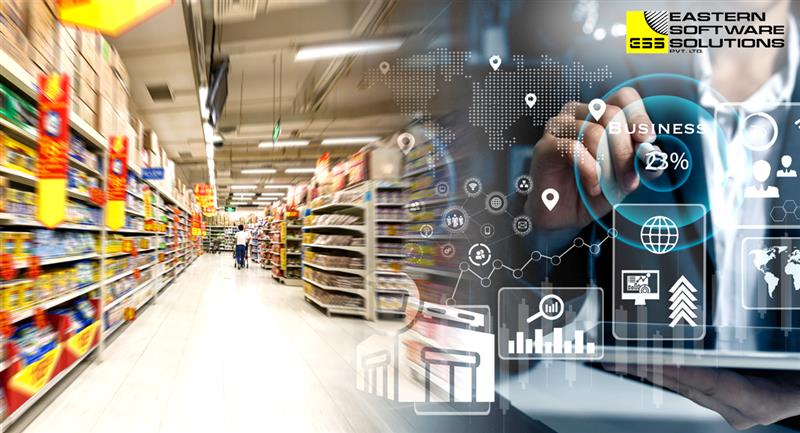Evolution Of RPA - From RPA 1.0 To RPA 2.0

Robotic Process Automation has emerged as a game-changer in the world of business automation. It refers to the use of software robots or "bots" to automate repetitive tasks and processes. These bots mimic human actions to perform tasks such as data entry, invoice processing, report generation, and more. By automating these mundane tasks, RPA frees up valuable time for employees, allowing them to focus on more strategic and value-added activities.
With RPA, businesses can achieve significant cost savings, improve operational efficiency, and enhance customer experience. However, traditional RPA is limited in its capabilities and relies on predefined rules and structured data. This is where RPA 2.0 comes into play.
RPA 2.0 represents the next generation of automation, powered by advanced technologies such as artificial intelligence (AI) and machine learning (ML). While RPA 1.0 focused primarily on rule-based tasks, RPA 2.0 takes automation to the next level by introducing intelligence and cognitive capabilities.
One of the key differences between RPA 1.0 and RPA 2.0 is the ability to process unstructured data. RPA 2.0 leverages AI and Machine Learning algorithms to analyze and understand unstructured data, such as emails, documents, and images. This enables bots to perform more complex tasks that involve natural language processing, sentiment analysis, and image recognition, among others.
Another significant advancement in RPA 2.0 is the ability to learn from experience. Traditional RPA bots follow predefined rules, but RPA 2.0 bots can learn from past interactions and make informed decisions based on historical data. This allows them to adapt to changing circumstances and handle exceptions more effectively, reducing the need for human intervention.
Key features and benefits of RPA 2.0
Robotic Process Automation 2.0 offers several key features and benefits that set it apart from its predecessor:
• Intelligent automation: It combines the power of AI and ML to enable bots to analyze data, make decisions, and adapt to dynamic situations. This not only improves process efficiency but also enables organizations to make data-driven decisions more effectively.
• Enhanced scalability and flexibility: It provides organizations with the ability to scale automation across departments and processes. It can seamlessly integrate with existing systems, allowing businesses to leverage their existing infrastructure investments without disruption.
• Improved accuracy and compliance: It bots are capable of executing tasks with a high degree of accuracy, minimizing errors and reducing the need for manual intervention. This ensures compliance with regulatory requirements and enhances data security.
• Cost and time savings: By automating repetitive tasks, it frees up employees' time, allowing them to focus on more strategic initiatives. This leads to increased productivity, cost savings, and improved customer satisfaction.
RPA 2.0 use cases and industries adopting it
Robotic Process Automation 2.0 has found its applications across various industries and business functions. Here are some common use cases:
• Finance and accounting: It can automate tasks such as accounts payable and receivable, financial reporting, and reconciliation. It can extract data from invoices, validate transactions, and generate financial reports with minimal human intervention.
• Human resources: It can streamline HR processes such as employee onboarding, payroll processing, and benefits administration. It can automate data entry, document verification, and employee record management, freeing HR professionals from manual and time-consuming tasks.
• Customer service: It can enhance customer service by automating tasks like order processing, complaint handling, and customer data management. Bots can retrieve customer information, update records, and even provide personalized responses, improving response times and customer satisfaction.
• Supply chain management: It can optimize supply chain processes by automating tasks such as order fulfillment, inventory management, and demand forecasting. It can integrate with various systems to track shipments, update inventory levels, and generate real-time reports.
• Healthcare: It can automate administrative processes in healthcare, such as patient registration, claims processing, and appointment scheduling. It can extract patient data from forms, validate insurance information, and update electronic health records, reducing errors and improving efficiency.
RPA 2.0 vs. traditional automation - a comparison
Robotic Process Automation 2.0 represents a significant advancement over traditional automation methods. Here's a comparison between the two:
• Complexity of tasks: Traditional automation is limited to repetitive, rule-based tasks, whereas it can handle more complex tasks involving unstructured data and decision-making.
• Learning capability: The bots can learn from experience and adapt to changing circumstances, whereas traditional automation follows predefined rules and lacks learning capabilities.
• Integration and scalability: It seamlessly integrates with existing systems and offers enhanced scalability, whereas traditional automation may require custom integrations and can be challenging to scale.
• Speed and accuracy:Bots can execute tasks faster and with a higher degree of accuracy compared to traditional automation methods, reducing errors and improving efficiency.
Conclusion: The future and its impact on businesses
RPA 2.0 represents the next phase in the evolution of automation, enabling organizations to achieve greater efficiency, productivity, and innovation. With its intelligent automation capabilities, it is poised to transform business processes across industries and functions.
As organizations continue to adopt the technology, it will become more sophisticated and capable. We can expect to see further advancements in AI, ML, and cognitive automation, enabling bots to handle even more complex tasks and decision-making.
In conclusion, it is not just a technological advancement; it is a strategic enabler for businesses to thrive in the digital era. By harnessing the power of intelligent automation, organizations can streamline processes, drive innovation, and stay ahead of the competition. Embracing RPA 2.0 is not a choice anymore; it is a necessity for businesses looking to achieve operational excellence and unlock their full potential.
Don't get left behind by automation. Visit our website www.essindia.com to schedule a consultation with our RPA experts or you can mail us on marketing@essindia.com.




